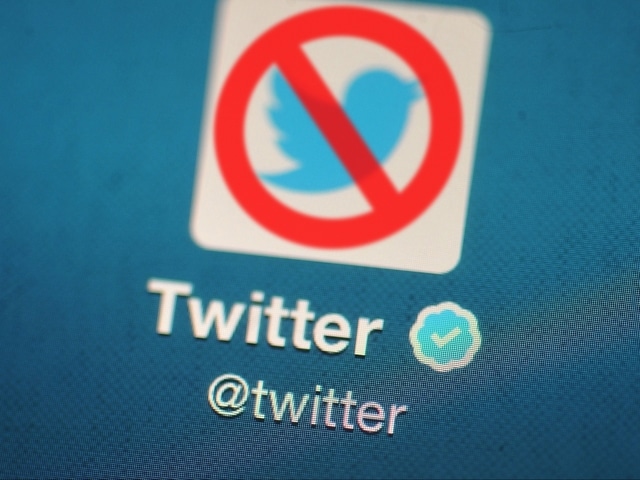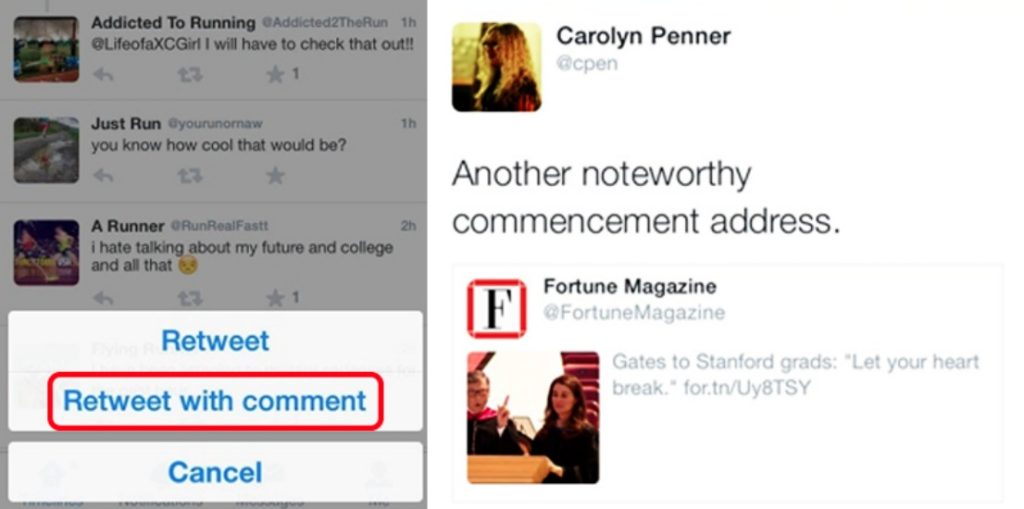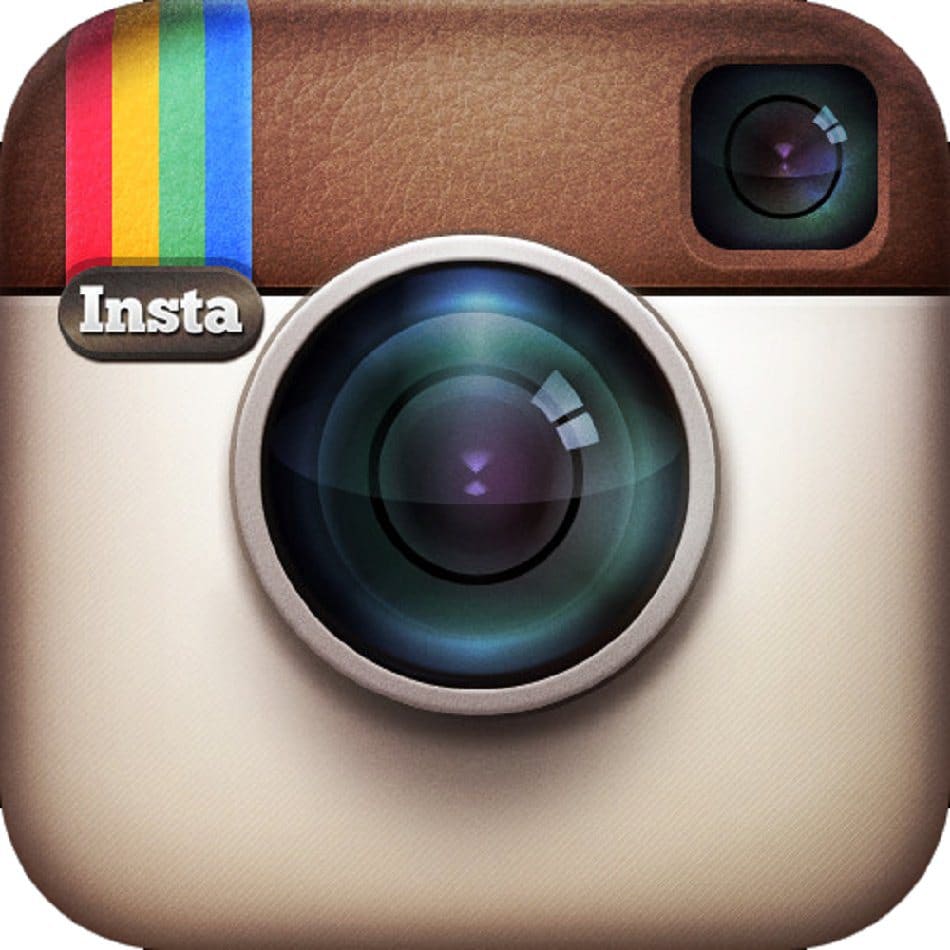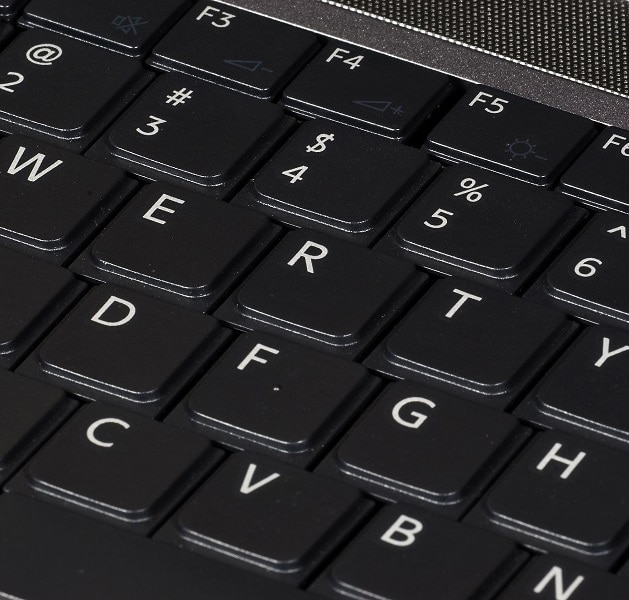Depending on what kind of social circle you have immersed yourself into in the Twitterverse, your timeline may have been excitedly squealing about Twitter’s new “Retweet with Comment” feature or angrily smashing their keyboards to push out expletive-filled tweets cursing the new feature’s existence.
It’s one of the moments that truly underlines the great Twitter divide that tends to exist between the social media platforms original, classic users and the newer users who are turning to Twitter as a blogging platform.
The new addition at the center of the digital discourse is the “Retweet with Comment” feature that the tech giant has been testing since last summer.
The feature allows users to add a comment within a retweet to make adding commentary to tweets easier and more convenient.
The feature is being rolled out on the site’s iPhone app, but the site promises that the feature will be coming to its Android app in the future.
From a general view, it’s a new feature that adds a lot more flexibility for users and caters to the desire to make ongoing dialogue easier to follow.
Previously, if users wanted to comment on a retweet they would have to make due with whatever space was left in the already short 140-character limit.
This often resulted in users shortening the original tweet, which could sometimes alter the context of the message. In other instances, users would have to significantly shorten their own comments or use other third-party apps to find their way around the character limit.
This new feature gives users their own additional 140 characters to use to comment on whatever interesting tweets they decide to share on their timeline.
Seems like there is very little not to like about the new feature if you are a part of a growing community of bloggers who use Twitter as a space for dialogue and general dissemination of news.
This is a population that is relatively new to the Twitterverse.
Long before the arrival of a wave of users driving extensive dialogue on the site, however, the brevity of 140 characters was an essential part of the platform’s appeal.
It was a restriction that presented a challenge for those who originally ushered Twitter into social media spotlight — the virtual comedians.
It’s a culture that’s hard to explain but easy to witness if you find yourself in certain digital subcultures like that of Black Twitter.
The brevity of the messages when commenting on retweets laid the foundation for certain emojis to be granted new meanings, shortened phrases and hashtags to hold greater context and essentially helped formulate secondary digital languages within certain subgroups on Twitter.
While commenting within the same retweet was often messy, difficult for some to follow and lacked any real sense of organization, it was also a cherished part of the Twitter experience.
For that reason, some users aren’t taking too kindly to the new feature that seems to have a Facebook-ish design behind it.
 When the official Twitter page sent out a tweet to demonstrate the new feature, these users were quick to urge the social media giant to take another stab at the new addition.
When the official Twitter page sent out a tweet to demonstrate the new feature, these users were quick to urge the social media giant to take another stab at the new addition.
“Revamped? It’s garbage,” one user replied to the tweet.
Another user wrote, “Change it … it looks atrocious.”
“I HATE IT,” another added.
Others voiced their frustrations that they would now have to seek a different Twitter app to use while the official Twitter app would now be boasting the new “Retweet with Comment” feature.
Others, of course, were excited about the feature’s arrival.
A series of thumbs-up emojis flooded Twitter’s replies along with tweets like “finally!” and “THANK YOU.”
Others didn’t seem too interested in the feature and instead suggested Twitter should have been working on a way to allow users to save .gifs from tweets or be alerted of people taking screenshots of their tweets.
It’s also important to note that it is not possible to embed the full retweet with comment to other platforms and websites.
For now, Twitter users remain extremely divided on the new feature’s arrival, but there is also a simple solution for the users who aren’t happy about the feature’s appearance or how it may impact the platform’s previous strictly enforced culture of brevity.
Don’t use the new feature.










